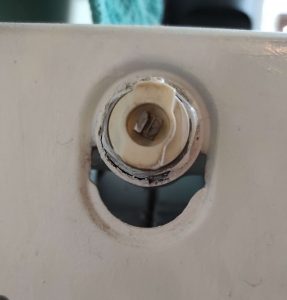When the cold weather sets in and you need every radiator in the house to work at maximum, you don’t want to find a couple of radiators in your heating system that aren’t heating up properly because of trapped air or that have cold spots.

Why does a radiator need bleeding?
The main reason radiators need bleeding is because of trapped air bubbles that occur as the water circulates around the heating system’s pipes and radiators. The trapped air needs to be removed by bleeding if the system is to function optimally, otherwise, radiators will stay cold at the top while being hot at the bottom.
Why does my radiator need bleeding every week?
Air is entering the heating system and getting trapped, usually near the top of the radiator. Air can enter the system in many ways. Even if there are no leaks, the way a combi boiler works generates air which enters the sealed, pressurised system. Other ways are due to bad plumbing, or when repair and maintenance work is carried out.
How to bleed radiators without a key
An alternative to the radiator key is to use a small flathead screwdriver. Most modern radiator bleed valves have an indent for the screwdriver. You can also use some small-nosed pliers. Some radiator bleed valves are hexagonal shaped so you can use an allen key.
If you don’t want to go into your toolbox at all, I’ve managed to use the nail file of a nail cutter to get the job done too.
How To Bleed a Radiator, 7 Step Guide

- Turn your heating on for half an hour to find out which radiators are cold or making gurgling noises. That is caused by trapped air and will need bleeding.
- Turn off your heating and wait for all the radiators to cool. Remember which radiators need to be bled.
- Start with radiators on the ground floor, place or hold a cloth where the bleed valve is at the top of the radiator and use your radiator key to turn the valve anticlockwise. Don’t open the valve fully but in small turns. When trapped air escapes you can hear a hissing sound. The picture shows what a bleed valve looks like.
- Close the valve clockwise when you see water starting to come out. Use your cloth to catch any water.
- Repeat for all the radiators that need bleeding working your way up each floor.
- Turn your central heating system back on and check the pressure gauge at the front of your boiler. Bleeding your radiators can cause the pressure to drop and if it gets too low (below 1bar), you’ll need to top it up. Use the filling loop to top the water back up to between 1 and 1.5 bar.
- Check the radiators you have bled are now heating up properly and there are no cold spots.
What happens if you bleed the radiator when the heating is on
You shouldn’t bleed the radiator when the heating is on, not only because it will be hot to touch, but hot water expands so will come out of the radiator more quickly, and not all the trapped air will be released. You have to turn off the heating and let the system cool down first before bleeding.
Bleeding radiator no water no air
If no water or air comes out when bleeding the radiator, this could be one of two issues: There is not enough pressure in the system; or the bleed valve has become blocked.
Both can be fixed easily. First, if there is not enough pressure in the system to force the air out of the radiator, you should top the system up with water until 1.5 bar, then bleed the radiator again. Carry on doing this until water starts coming out.
If the bleed valve is blocked, after turning the lockshield and radiator valve off at both ends, remove the centre bleed screw fully, and remove any blockage with a pin. Replace the screw and open both valves up again.
Too much water comes out when bleeding radiators
It is normal for water to come out when bleeding radiators as it shows all the trapped air has been released. But be careful not to let too much water come out, otherwise the lost water in the system will have to be replaced for it to function properly. The problem here is that fresh water has a lot of air in it which can get trapped again.
What if a radiator needs bleeding frequently
If you find that a particular radiator needs bleeding frequently, it is often down to a leak in the system. Even if it’s a sealed system, air can still be drawn into it. Usually, a towel rail on one of the upper floors of the house ends up having this problem, so check this out very carefully where the connections screw into the rail.
If you don’t find a leak after a thorough search, it may be time to call in a gas professional to take a look inside the boiler for leaks around pumps or air vents, or pressure relief valves.
Hometree offers a great all-round service for your home needs, including boiler, plumbing and electrics. Check them out on the link below.
*The information in this article should be used for general guidance only and not as financial or health advice. Full details are on the link in the footer to our disclaimer page. Always discuss your requirements with a competent and suitably qualified professional before undertaking any work.
Affiliate disclosure
Heatology.co are participants in a variety of affiliate schemes which help fund and run this website, visitors who follow our links and purchase a product may earn Heatology.co a commission. The money we make from affiliate marketing costs you nothing but keeps us online, so thank you for your continued support!
